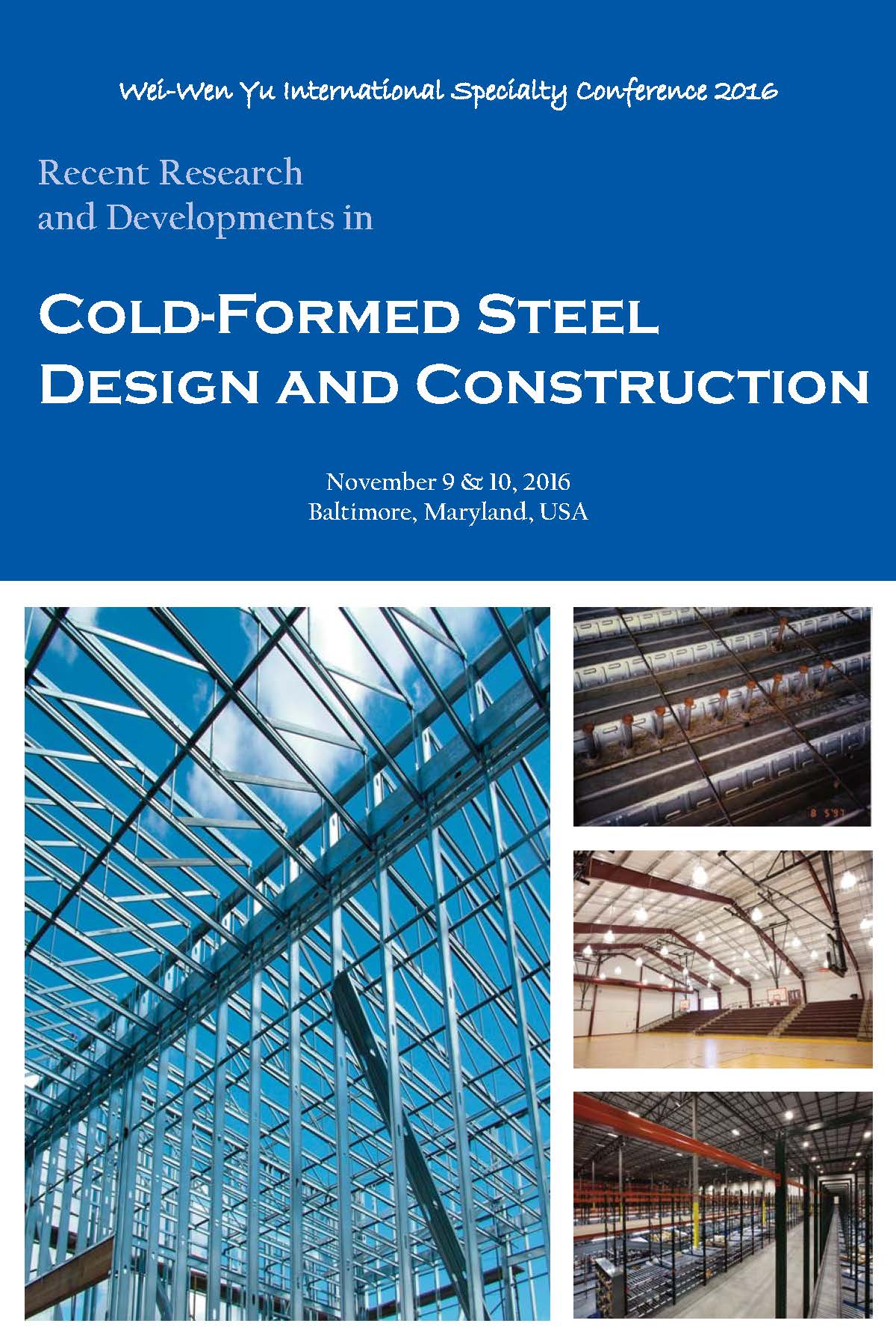Session Dates
10 Nov 2016
Abstract
Electrical switchboards are one of the key pieces of equipment used in operations of most critical facilities such as hospitals and emergency services buildings. Unfortunately, past observations have shown that the switchboard cabinet and its contents may be vulnerable to damage or failure during an earthquake. An electrical switchboard cabinet is a complex structure typically constructed using cold-formed steel frame members enclosed by steel panels and containing a variety of switchgear and bus bars. The panels are usually fastened to the steel members by screws, and the steel members are connected together by bolts or screws. The structural behavior of the cabinet can be evaluated using shake table testing and/or high fidelity finite element models. However, these methods are relatively expensive, highly specific, and interpretation of the results may be difficult. Therefore, a method to formulate a simplified finite element model for the cabinet is proposed in this study. The simplified model consists of beam elements (Timoshenko), shell elements and springs. This model can be constructed and executed computationally at a lower cost, and interpretation of the results is a simpler assignment. The present model has the capability to capture the effect of warping deformation in the frame members and possible nonlinear behaviors of the cabinet, such as: local buckling at the end of frame members due to high bending moments, failure of the screw connections and buckling of the panels. The simplified model is validated using a high fidelity model of the cabinet under 1st-order and 2nd-order pushover analyses. Future work to incorporate structural models for the internal components is also discussed.
Department(s)
Civil, Architectural and Environmental Engineering
Research Center/Lab(s)
Wei-Wen Yu Center for Cold-Formed Steel Structures
Meeting Name
International Specialty Conference on Cold-Formed Steel Structures 2016
Publisher
Missouri University of Science and Technology
Document Version
Final Version
Rights
© 2016 Missouri University of Science and Technology, All rights reserved.
Document Type
Article - Conference proceedings
File Type
text
Language
English
Recommended Citation
Lim, Edwin; Goodno, Barry J.; and Craig, James I., "Development of a Method to Generate a Simplified Finite Element Model for an Electrical Switchboard Cabinet" (2016). CCFSS Proceedings of International Specialty Conference on Cold-Formed Steel Structures (1971 - 2018). 2.
https://scholarsmine.mst.edu/isccss/23iccfss/session11/2
Development of a Method to Generate a Simplified Finite Element Model for an Electrical Switchboard Cabinet
Electrical switchboards are one of the key pieces of equipment used in operations of most critical facilities such as hospitals and emergency services buildings. Unfortunately, past observations have shown that the switchboard cabinet and its contents may be vulnerable to damage or failure during an earthquake. An electrical switchboard cabinet is a complex structure typically constructed using cold-formed steel frame members enclosed by steel panels and containing a variety of switchgear and bus bars. The panels are usually fastened to the steel members by screws, and the steel members are connected together by bolts or screws. The structural behavior of the cabinet can be evaluated using shake table testing and/or high fidelity finite element models. However, these methods are relatively expensive, highly specific, and interpretation of the results may be difficult. Therefore, a method to formulate a simplified finite element model for the cabinet is proposed in this study. The simplified model consists of beam elements (Timoshenko), shell elements and springs. This model can be constructed and executed computationally at a lower cost, and interpretation of the results is a simpler assignment. The present model has the capability to capture the effect of warping deformation in the frame members and possible nonlinear behaviors of the cabinet, such as: local buckling at the end of frame members due to high bending moments, failure of the screw connections and buckling of the panels. The simplified model is validated using a high fidelity model of the cabinet under 1st-order and 2nd-order pushover analyses. Future work to incorporate structural models for the internal components is also discussed.



